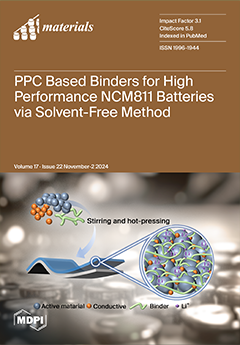Open AccessReview
Role of Metalloproteinases in Adhesion to Radicular Dentin: A Literature Review
by
Marihana Valdez-Montoya, Mariana Melisa Avendaño-Félix, Julio César Basurto-Flores, Maricela Ramírez-Álvarez, María del Rosario Cázarez-Camacho, Miguel Ángel Casillas-Santana, Norma Verónica Zavala-Alonso, Seyla Nayjaá Sarmiento-Hernández, Erika de Lourdes Silva-Benítez and Jesús Eduardo Soto-Sainz
Cited by 1 | Viewed by 807
Abstract
Introduction: Root dentin is a porous and complex dental surface that may have irregularities and deposits of organic material. To achieve an effective bond between restorative materials and root dentin, it is necessary that the restorative materials adhere intimately to the dentin surface.
[...] Read more.
Introduction: Root dentin is a porous and complex dental surface that may have irregularities and deposits of organic material. To achieve an effective bond between restorative materials and root dentin, it is necessary that the restorative materials adhere intimately to the dentin surface. Metalloproteinases (MMPs) are a group of proteolytic enzymes that perform an important role in degrading the extracellular matrix and remodeling connective tissue. The aim of this research was to determine the scientific evidence available on the role played by MMPs in adhesion to root dentin and their putative inhibitors. Materials and Methods: Several techniques have been used to evaluate the presence of MMPs in the root dentin of human and bovine teeth, such as Western blot, immunohistochemistry, immunofluorescence, and zymography, the latter also being used together with the EnzCheck assay to evaluate the inhibitory effect of adhesion protocols on the activity of root MMPs in vitro. Results: When analyzing the databases, 236 articles were found, 12 of which met the selection criteria. The variables analyzed were articles that evaluated different MMP inhibitors in root dentin. Conclusions: In the adhesion to radicular dentin, MMPs have a crucial role in the degradation of the extracellular matrix of dentin and the remodeling of the dentin surface because excessive MMP activity can be harmful to dental health, since excessive degradation of the extracellular matrix of dentin can weaken the tooth structure and decrease fracture resistance. Therefore, it is important to monitor MMP activity during root dentin bonding procedures.
Full article






